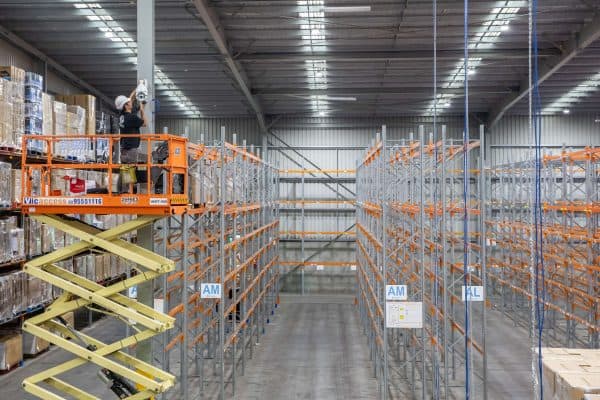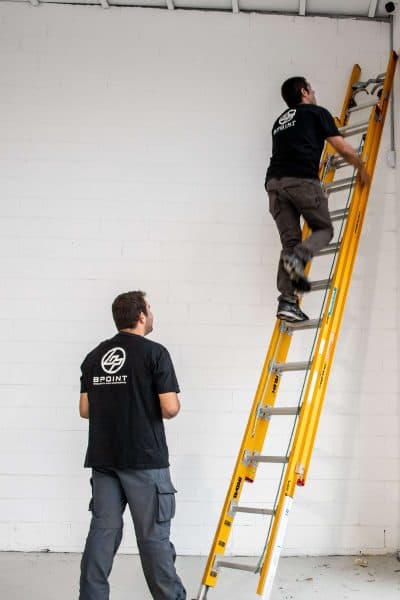Even the smallest warehouses are generally sizable enough to present considerable challenges to security. It takes specific equipment, careful planning, and the right array of features to successfully cover every corner of the property and protect the goods and equipment within.
Though warehouse security may be complex, it has never been more important to ensure that your warehouse is secure. A 2021 report on cargo theft revealed that theft from warehouses and storage facilities is on the rise. Conducted by TT Club (a transport and logistics insurer) and BSI (a supply-chain intelligence firm), the research covered both global and regional trends.
From 2019 to 2020, theft of cargo in transit dropped from 87% to 71%. Over the same period, theft from warehouses and storage sites increased, now accounting for 25% of all cargo theft. Though theft in transit is still the most significant issue, it’s clear that warehouses are becoming an increasingly appealing target for criminal activity.
To do our part in addressing this issue, we’ve developed the following warehouse security checklist:
 1. Warehouse CCTV installation, checks, or upgrades
1. Warehouse CCTV installation, checks, or upgrades
Almost all modern warehouses are now fitted with CCTV cameras, and while they are designed to last, they should not be set-and-forget security features. Regular checks and maintenance will safeguard you against premature breakdown, potentially saving you a whole lot of money.
In general, it’s important to keep an eye on the quality of the footage as this will clue you into whether there may be issues with the cables or the cameras. Routine CCTV camera maintenance should involve checking over cables, gently cleaning the lenses, and checking for any built-up grime that may be reducing functionality. With external cameras, you should also cut back any foliage that may be obscuring their line of sight.
2. Warehouse security alarm installation, checks, or upgrades
If you’ll be installing a new commercial security alarm system, the good news is that the latest alarms will give you maintenance alerts, meaning that you’ll know automatically if something needs attention.
Still, it’s a good idea to have your system inspected at least once a year. If you have an older alarm system, this is even more of an imperative. The news that there’s a fault in your system is far less painful when it comes from a security technician rather than a security breach.
3. Consider adding 24/7 monitoring to your security measures
Round-the-clock monitoring can protect your building and your assets from theft, vandalism, and fire. It’s also a viable alternative to the expense of having security guards patrolling the property over the holidays.
With 24/7 monitoring, you have the peace of mind that comes with knowing a professional security team will be keeping an eye on your warehouse around the clock. Your security provider will be notified of any criminal activity, accidents, or other problematic events on your property, and they will take the steps necessary to swiftly resolve the situation.
4. Upgrade data entry and inventory control systems
If you’re still working with a manual inventory control system, upgrading to digital will save you time and improve the accuracy of your record-keeping. However, it’ll also give your security a healthy boost. Switching to RFID readers or barcode scanners will allow you to immediately take stock of inventory as it arrives and departs, and the more clarity you have in the movement of goods through your website, the tighter your security will be.
The risk of human error is greatly reduced by the introduction of a fully digital system, and you’ll have a detailed record of stock movement, including the precise times when items were scanned in and out of the facility. With CCTV and other security measures also in place, you’ll have a far greater chance of tracking down precisely what happened to any missing stock.
 5. Consider adding motion, perimeter, and window sensors
5. Consider adding motion, perimeter, and window sensors
Perimeter protection is one of the most important safety and security measures in a warehouse. However, every property is different, so the ideal sensor layout will also vary. In general, a robust warehouse perimeter security system should include glass-break detection and motion sensors around the perimeter and key access points.
These sensors are a great way to beef up your security system. Glass-break detectors, for example, monitor for the noise and vibrations that indicate a window has been breached. They can trigger your alarm, and if you have IP (Internet Protocol) cameras and remote monitoring, they can instantly relay relevant footage to your security team using the local area network. These sensors are particularly important for warehouses with ground-level windows.
6. Upgrade your warehouse access control system
Most warehouses could benefit from access control technology. The larger the property is, and the more people you have coming and going, the more important it becomes to have a state-of-the-art access control system in place.
Upgrading your system will give you better control over who gets to access which areas of your property and when. With zoning, it’s easy to create secured and restricted areas within the warehouse. Fobs or key cards can be programmed with the right permissions, ensuring only authorised people are able to gain entry to your warehouse and each zone within it.
The beauty of upgrading your warehouse access control system is that it will better integrate with your other commercial security solutions, including CCTV cameras, IP cameras, alarm systems, and sensors. This will help you address both internal and external theft and other potential threats.
7. Revisit risk assessment
You likely conducted risk assessments when you purchased or leased the warehouse, so it’s easy to assume that this job is now done and you can simply rely on your initial findings. However, time changes all things, including your property’s weak points and potential threats.
Perhaps a new building went up next door, making it easier for criminals to find an access point via your roof. Maybe structural aspects of your building or perimeter fence have aged, making them more susceptible to being breached. Or it could be that the tools and methods used by criminals have changed since you installed your security measures, leaving you at risk.
To ensure every angle of your risk assessment is covered, it’s a smart move to engage a professional security company. Doing so will give you access to technicians who specialise in warehouse security. They’ll be able to identify even the most subtle vulnerabilities, and you’ll get a full rundown of the best security measures to address them.
If your warehouse or commercial property is in need of a site inspection, contact BPoint security today. Our skilled technicians will conduct a risk assessment and help you determine the ideal security solutions for your unique needs.

